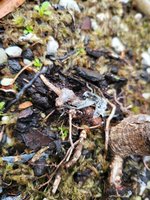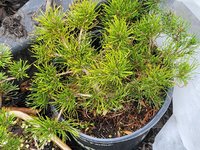I only do celcius so you'll have to convert it yourself. Our springs are mild, feb-april can be -15 to 23°C with the freezing temps lasting a couple days, sometimes up to ten days. They go up and down with the lowest temps around march. But we often get a fake summer before a cold snap in spring.
Usually mugo don't care. The Alps can be -5 at night and +25°C in spring as well, depending on sun exposure and location.
Our summers range from about 17°C to 33°C and last from May to August, sometimes with warmth (20°C and up) going into september and october. Sometimes it freezes a little bit halfway through october.
For what it's worth: I raise my plants in a spartan way; I do my part of the job and they do the rest. If a cold snap happens, that's their problem. They stay on the bench. But an unexpected frost never killed my plants. I've imported plants from warm parts of Spain and Portugal and they go out immediately, even if it freezes. That includes expensive yamadori.
Expected heat did kill a bunch, as did rootwork after the roots have grown. So I tend to repot rather sooner than later, to make good use of that first root growth of the year. Roots only stop growing in winter, and that first flush in spring takes a bunch of energy. I strongly believe that taking those expensive parts off is in no sense beneficial for the plant.
Whatever you read, anywhere, that includes my own posts, it should make sense to you. It should sound logical. If it sounds counterintuitive or illogical, it probably is.
We've had this discussion more than once on this forum. So you can probably find the pros and cons of mugo summer repotting. If memory serves me right there's a 40/60 summer/spring stance in general.




